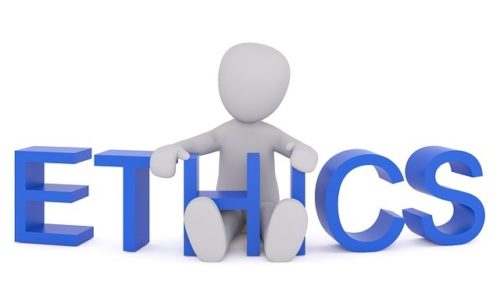-
Online Civility and Professionalism for Attorneys Online Civility and Professionalism for Attorneys In the realm of legal practice, the issue of incivility among lawyers is a multifaceted concern, with varying beliefs about its prevalence and causes. Some point to the portrayal of lawyers in media and a blurred line between assertiveness and rudeness, while others blame technology and the divisive state of public discourse. Several states, like New York, Utah, and Illinois, have established programs and hotlines to address ethics and professionalism. Surveys suggest that a majority of lawyers perceive their colleagues as civil, yet many still report experiencing uncivil behavior. In California, attorney guidelines emphasize civility and respect in communications and interactions within the legal system. To counter incivility, legal professionals are advised to maintain written records of inappropriate conduct, engage in open discussions with opposing counsel, and seek guidance from mentors or senior attorneys. Additionally, online civility presents distinct challenges due to anonymity, potential miscommunication, and the risk of harassment. Lawyers are encouraged to be cautious about sensitive topics and consider legal actions if harassment occurs. Agenda/ Obejectives - Understanding the Roots of Incivility and Professionalism - 6 Minutes - State Initiatives and Ethics Programs - 8 Minutes - Survey Insights and Lawyer Perceptions - 7 Minutes - Attorney Guidelines of Civility and Professionalism - 11 Minutes - Challenges in Online Civility and Professionalism - 8 Minutes - Strategies for Promoting Civility and Professionalism - 10 Minutes - Privacy and Sensitivity in Legal Practice - 8 Minutes - Taking Action Against Online Incivility and Professionalism - 7 Minutes
-
Pro Bono Representation: Help the Profession Help Others
-
Basics of Landlord/Tenant Law for Ohio
Discover the essentials of landlord/tenant law in Ohio with this concise course. Whether you're a landlord or tenant, gain insights into key topics such as lease agreements, security deposits, eviction procedures, and property maintenance. Learn about your rights and responsibilities under Ohio law to establish fair and harmonious rental relationships. Please note that this course provides an overview and should not be considered legal advice. Consult an attorney for specific cases or unique circumstances. Start your journey towards understanding Ohio's landlord/tenant law today!
Agenda:
-
Overview of Landlord/Tenant Law
-
Define landlord/tenant law
-
Discuss the importance of understanding the legal framework
-
-
Lease Agreements
-
Explain the key elements of a lease agreement
-
Discuss common terms and provisions
-
Highlight the significance of written agreements
-
-
Security Deposits
-
Describe the purpose and regulations surrounding security deposits
-
Explain procedures for handling and refunding deposits
-
Discuss legal requirements for documenting damages
-
-
Rent Increases
-
Explain the rules and limitations on rent increases in Ohio
-
Discuss proper notice requirements
-
-
Eviction Procedures
-
Outline the steps involved in evicting a tenant
-
Explain the legal grounds for eviction
-
Discuss the importance of adhering to proper procedures
-
-
Property Maintenance
-
Discuss landlord responsibilities for maintaining the rental property
-
Highlight tenants' rights to habitable living conditions
-
Address common maintenance issues and dispute resolution
-
-
Tenant Rights
-
Explain tenants' rights under Ohio's fair housing laws
-
Discuss protections against wrongful eviction and discrimination
-
Briefly cover privacy rights and access to the property
-
-
-
Help for the Helper: The Effects of Trauma and Compassion Fatigue on the Lawyer Who Cares Many of us were attracted to the legal profession because we care about people and want to help them. Attorneys hopefully recognize that, unlike many other professionals, their lives are already filled to the brim with anxiety and stress.The consequences of shrugging it off can be catastrophic. One of those consequences that we often hear about is burnout. And then there’s a special type of burnout called “secondary traumatic stress” or “compassion fatigue”. The ramifications of trauma and compassion fatigue aren’t discussed as frequently as those of stress and burnout thus, for many attorneys, they are topics in need of attention. Secondary or vicarious trauma can be the cumulative effect of listening to a client or witness relay graphic stories and experiences. Those who experience compassion fatigue tend to take on the pain, suffering and burdens of the people they are helping. It is an exhaustion that is felt physically, emotionally or mentally and can affect numerous areas of your life, often leaving you feeling numb. Recent studies have shown that there has been a dramatic increase in impairment due to alcoholism, addiction and mental health disorders among members of the legal profession. The statistics are compelling and clearly indicate that 1 out of 3 attorneys will likely have a need for substance use or mental health services at some point in their careers. Mr. Quinn will discuss: 1. The early warning signs of impairment, with special emphasis on stress, burnout, trauma and compassion fatigue. 2. The free services that Lawyers Assistance Programs provide to lawyers, judges, their family members and law students. 3. A close look at what barriers exist that prevent lawyers and judges from seeking the help they need will be provided. 4. The role that education plays in breaking the stigma and fear associated with addiction and mental illness in the legal profession. 5. How best to approach the impaired individual.
-
Unauthorized Practice of Law: Ethical Dilemmas and the Rule of Law Unauthorized practice of law, or UPL, refers to the practice of law by individuals or entities who are not authorized to do so. The purpose of regulating UPL is to ensure that only licensed attorneys are able to provide legal services to the public, thereby preserving the integrity of the legal profession and protecting the public from harm. However, tensions can arise when consumers require legal services that they perceive as too expensive if provided by a licensed attorney or firm. This course explores the complexities of UPL, including the balancing factors that states use to address these issues. It also examines various situations where non-lawyer entities may pose a risk to the public, and how lawsuits have been used to limit or curtail their activities. By understanding the risks and challenges associated with UPL, legal professionals can take steps to safeguard the public and ensure the continued value of licensing and ethical controls such as Bar Associations and Court systems. AGENDA
- Defining Unauthorized Practice of Law
- Discuss what constitutes unauthorized practice of law
- Explain why regulating UPL is necessary
- Balancing Consumer Needs and Protecting the Public
- Discuss the tension between consumers' need for affordable legal services and protecting the public from harm
- Explore how certain states have attempted to balance these needs through legislation and regulations
- Examine situations in which non-lawyer entities have posed a risk to the public
- Discuss examples of lawsuits and other measures taken to limit or curtail these activities
- Legal and Ethical Controls
- Discuss the role of Bar Associations and Court systems in regulating the legal profession
- Explain how these entities help to ensure ethical and professional conduct among lawyers
- UPL and Technology
- Discuss how technology has impacted the unauthorized practice of law
- Explore the challenges and opportunities presented by technology in regulating UPL
- Enforcement of UPL Regulations
- Explain how UPL regulations are enforced
- Discuss the challenges and limitations of enforcement
- Examine case studies of UPL incidents and their outcomes
- Discuss what can be learned from these incidents
- Discuss the potential evolution of UPL regulation in the future
- Highlight emerging trends and challenges in regulating UPL
- Best Practices for Lawyers
- Discuss best practices for lawyers to avoid UPL violations
- Explain the consequences of UPL violations for lawyers
- Best Practices for Consumers
- Discuss best practices for consumers to avoid UPL risks
- Explain how consumers can ensure they are working with licensed attorneys
-
Technology & Bias Spreading It And Stopping It The provided materials cover a wide range of topics related to bias and strategies for addressing it. The first piece delves into the definition of bias as an unfair treatment or policy based on prejudice, and its implications in the realms of employment and public services. Another item explores Elimination of Bias Requirement, which encourages lawyers to confront and overcome their own biases in order to combat systemic discrimination. A third piece distinguishes between conscious and unconscious biases, highlighting the prevalence and potential negative impact of the latter. The fourth material focuses on the role of artificial intelligence in either perpetuating or mitigating bias in a variety of domains, including language, hiring, and evaluation. Finally, an additional resource emphasizes the potential for bias to arise when technology is not utilized, particularly in the context of age discrimination. AGENDA: 67 Minutes 5-15 minutes: Overview of the provided materials on bias and combating it 10-25 minutes: The first section, which defines bias as an unfair act or policy stemming from prejudice, which can manifest in employment and public services 25-40 minutes: The second section, which discusses the goal of Elimination of Bias Requirement and aims to get lawyers to recognize and fight against their own internalized biases that may contribute towards systemic discrimination 40-50 minutes: The next section, which distinguishes between conscious and unconscious biases, with the latter being more prevalent and often incompatible with one's conscious values 50-60 minutes: The fourth section, which covers the role of artificial intelligence in perpetuating or preventing bias in various domains, such as language, recruitment, and assessment 60-67 minutes: The fifth section, which highlights the bias that can occur from not using technology, particularly in the case of age discrimination.
-
Paying for Referrals: A Danger to the Payor and Recipient's Freedom.
-
Physician Employment Agreements: Problem Areas that can be Landmines
-
The Healthcare Quality Improvement Act: How to Achieve Immunity in Your Peer Review Process
-
Dealing with the Disruptive Practitioner in a Legally Compliant Manner
-
Taking Off the Gloves: What to Expect in U.S. Tax Court


